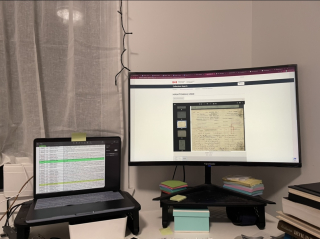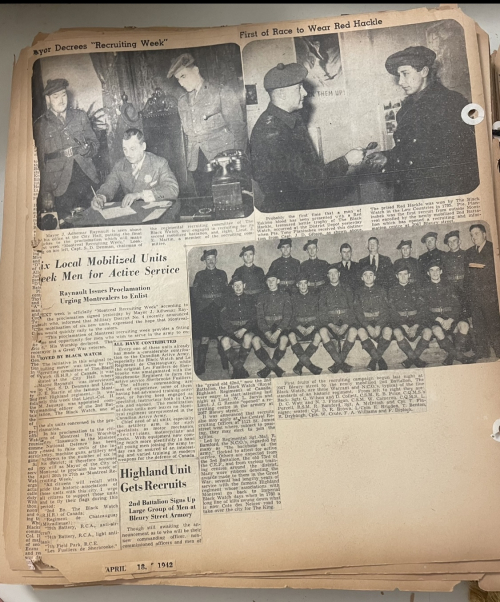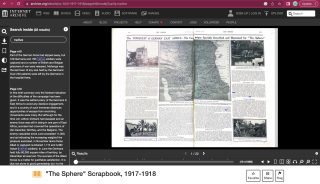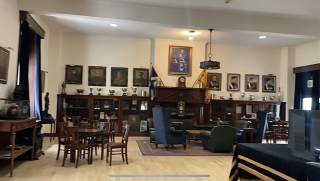This summer, I interned at the Black Watch Museum and Archives doing a project investigating diversity within the Black Watch’s history. As a second-year history student, spending my summer performing research was an invaluable opportunity that has greatly enriched my university experience. Though I knew a bit about the Black Watch before my internship, I had no idea how rich its history was or how distinguished the regiment is in Canadian military history until beginning my work. The Black Watch, Royal Highland Regiment of Canada, is the oldest highland regiment in Canada with roots in Montreal’s Scottish community. The regiment has been involved in all of Canada’s major military conflicts and boasts many of the most impressive military awards achievable in Canada.

At the Black Watch armoury on De Bleury street—which many McGill students regularly pass by as it is quite close to campus–there is an extensive regimental archives which provide the setting for McGill students to take on history internships. Unfortunately, this summer the archives at the armoury itself were closed for renovations, however, I was still able to access many archival documents online in their digitized form or at the Maison Louis Joseph Forget, my main in-person work location.
I initially interviewed for the Black Watch internship position that the Arts Internship Office posted, which entailed working in the regimental archives doing cataloguing, digitizing, and indexing work. During my interview I brought up my interest in Indigenous history, and my supervisor and I began discussing the possibility of a research project looking into diversity and identity within the Black Watch, historically and in the present day. My supervisor arranged for this project to happen and hired me to perform original research at the Black Watch–a very special opportunity for a student only in the second year of their undergraduate degree. The purpose of this research was to answer the following questions: why do non-Scottish people choose to enlist in a Scottish regiment? What is the experience of these individuals in the regiment? Have there been instances of explicit or implicit discrimination the regiment’s history, and what is the nature of these incidents?

My work largely revolved around finding and researching–which sometimes involved personal interviews—interesting characters and stories from the Black Watch’s history. Some of these stories were quite well known, such as the story of Grey Owl, an English man who came to Canada, successfully disguised himself as an Indigenous person, went on to become a famed conservationist, and was in the Black Watch during World War I. To find names of soldiers from World War I, I combed through the nominal rolls from the Black Watch’s three battalions looking for names of non-Scottish origin, especially names that indicated an Indigenous or otherwise unusual identity for a highland regiment. Then, I cross-referenced any name I wanted to look into with the World War I personnel records, which contained each soldier’s birthplace, available online at Library Archives Canada. From World War II and on, I relied on sources and leads from my supervisor and other Black Watch members I was able to speak to personally.

By far, the biggest highlight of my internship was the interviews I conducted with various former and current members of the Black Watch. This task gave me the opportunity to meet and speak to many individuals, both former and current members of the Black Watch, who live across Canada with a wide range of identities, life paths, and occupations. One standout interview was with Lionel Chetwynd, an Oscar-nominated screenwriter, director, and producer. I was able to have an hour long conversation with him about his time in the Black Watch as a Jewish man and his insights about my research and the Black Watch as a whole.
Additionally my project involved learning about the cultural elements and highland characteristics of the regiment, including the pipe band, the Black Watch tartan, and the distinctive dress of the regiment—a kilt, a bonnet, and a Red Hackle on the bonnet. I also investigated the relationship between the Black Watch and Kahnawake. I was able to speak with Ray Deer, the President of the Royal Canadian Legion branch in Kahnawake, about the long-standing tradition of the Black Watch pipe band playing in the Kahnawake legion’s Remembrance Day parade.

At times, especially earlier on in my project, I struggled with where exactly to find research leads and who to ask for more information about specific topics. The others working with the archives—both fellow students and members of the regiment—helped with this challenge and repeatedly shared relevant documents, photos, and names of soldiers who became important features in my final research paper. I am very grateful to Bruce Bolton who created this opportunity for me, has been extremely helpful in guiding and overseeing this project throughout the summer, and is ultimately responsible for me getting to enjoy a very academically and personally fulfilling internship experience. Additionally, I am grateful to the St. Andrew’s Society of Montreal and the McEuen Scholarship Foundation, who provided my scholarship award and made it possible for me to spend my summer taking on this internship.

